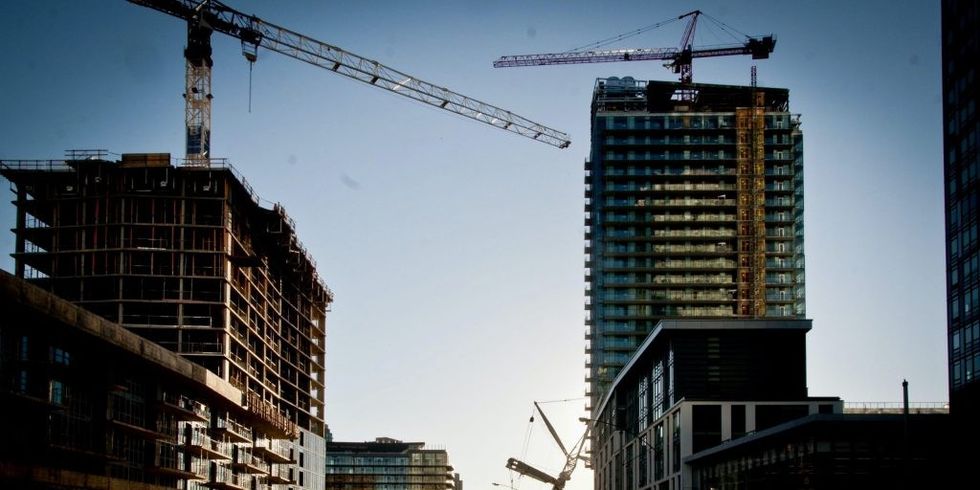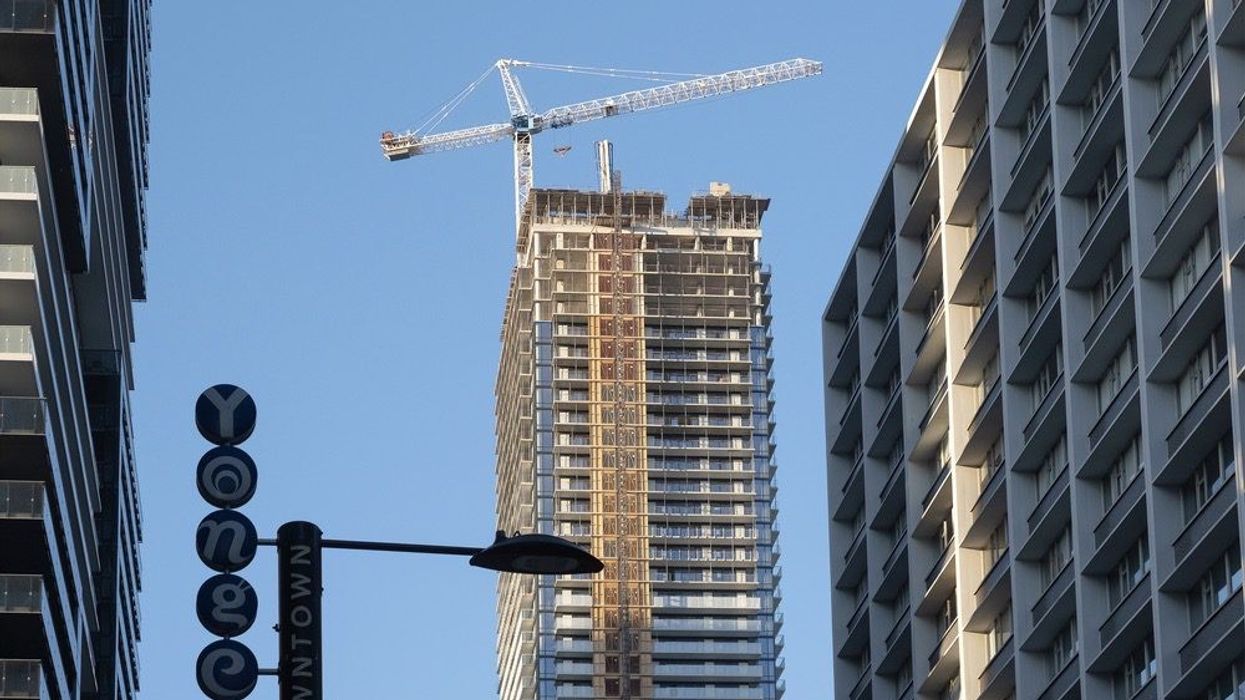Cranes have been a contentious issue in the Greater Toronto Area (GTA) in recent years -- and not only because Toronto remains the building crane capital of North America, thanks to rampant construction.
Crane collapses have become too common in Canada and the GTA.
In July 2021, a 15- to 18-foot-tall crane above Toronto’s L Tower condo building came crashing down above its roof.
In July 2020, Toronto police evacuated multiple buildings in the area of Simcoe and Wellington streets after a crane collapsed onto one of them. The following month, a crane came toppling down in the Regent Park neighbourhood, narrowly missing a young woman (it hit her bicycle) and a male bystander. Then, in late November, a construction crane collapsed and fell into a sinkhole at a Crosstown LRT construction site at Eglinton Avenue East and Mount Pleasant Road. Thankfully -- like the other incidents -- no injuries were reported.
But clearly, it’s time for change.
Today, the Residential Construction Council of Ontario (RESCON) and its industry partners released a comprehensive best practices guide that will be used by builders and trade contractors when erecting, operating, and dismantling tower cranes.
The document, officially called the Construction Industry Code of Practice: Safe Use of Tower Cranes, outlines what mechanical, electrical, and structural inspections are required prior to erecting a tower crane on a building site, the methodologies and safe practices that should be followed when erecting the crane, and what functional and operational tests are needed before it is put into operation.

“Health and safety is our top priority. Through the use of a continuous improvement model, we will continue to focus on the safety of the residential construction sector,” says RESCON VP Andrew Pariser, chair of the association’s safety committee. “By documenting best practices that exceed legislative and regulatory requirements, we can make meaningful safety improvements. The code of practice was put together with input from various associations, engineers, suppliers, and health and safety professionals.”
RESCON says its members as well as the Ontario Formwork Association (OFA) and James Wilkinson, P.Eng. of Wilkinson Technical Services Inc., played a critical role in developing the guide, along with RESCON’s crane safety committee and health and safety committee.
The guide covers pre-erection inspections and reviews, initial erection on the project, and safe operating practices, including climbing and dismantling procedures. It outlines what inspections must be done, documentation requirements and engineering inspections necessary at the pre-and post-erection stages, and what is required if multiple cranes are on a project. There is a checklist of documents that must be retained at the project by the constructor and project management team.
“The safe operation of tower cranes on construction sites requires the co-operation of everybody involved in a project -- from the crane operators who run the equipment to those who oversee the project,” says Wilkinson. “We want to make sure that everyone in the industry understands the requirements and necessary procedures they must follow, including the mandatory documentation they must maintain to ensure construction worksites remain safe.”
RESCON says the guide is not intended to replace regulatory requirements or applicable codes and standards but will assist constructors in understanding proper procedures that must be followed and documentation that is required.
According to RESCON, while the primary scope applies to tower cranes, the general practices and procedures for hoisting and rigging set out in the guide may also apply to other hoisting equipment on a project. “The code of practice requires a significant expansion of the existing role of the professional engineer in the design, inspection and oversight of tower cranes on construction projects,” reads a RESCON-issued press release.
The guide will be distributed to all RESCON members and sent to the Infrastructure Health and Safety Association and Ministry of Labour, Immigration, Training and Skills Development. RESCON is also planning a crane safety event in January.
“High-rise forming companies are leaders when it comes to health and safety. We want to build on that leadership position and will continue to dedicate resources focused on crane safety,” says Dennis Cancian, executive director of the OFA. “This guide documents existing best practices and will help inform all parties of their responsibilities, making sure everyone is aware of the rules and procedures.”





















